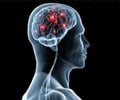The workings of the mind are really mysterious, however these have inspired a computational technique that can see through the regions of the brain affected by the personality disorder schizophrenia.
The workings of the mind are really mysterious, however these have inspired a computational technique that can see through the regions of the brain affected by the personality disorder schizophrenia. Researchers feel the program could be worked out eventually into a tool that can help diagnose the condition.
Exactly what goes wrong in the brains of people with schizophrenia is yet to be pinned down. Raymond Deicken at the University of California at San Francisco and colleagues have been studying the amino acid Nacetylaspartate (NAA). They found that levels of NAA in the thalamus region of the brain are lower in people with schizophrenia than in those without.To find out whether software could diagnose the condition from NAA levels, the team used a technique based on magnetic resonance imaging to measure NAA levels at a number of points within the thalamus of 18 people, half of whom had been diagnosed with schizophrenia. Antony Browne of the University of Surrey, UK, then analysed these measurements using an artificial neural network ¨C a program that processes information by ¡°learning¡± to recognise patterns in large amounts of data in a similar way to neurons in the brain.
Browne trained his network on the measurements of 17 of the volunteers to teach it which of the data sets corresponded to schizophrenia and which did not. He then asked the program to diagnose the status of the remaining volunteer, based on their NAA measurements. He ran the experiment 18 times, each time withholding a different person¡¯s measurements. The program diagnosed the patients with 100 per cent accuracy.
Browne also identified the two areas of the thalamus that were most important in the program¡¯s ability to distinguish people with schizophrenia from those without ¨C the right mediodorsal nucleus and pulvinar. These regions process sensory input and send it to parts of the brain responsible for functions known to be impaired in schizophrenia, such as the prefrontal cortex.
Neural networks are efficient at finding connections within large amounts of information, so the technique should allow researchers to look for other areas of the brain that may also be involved in schizophrenia.
The researchers, who presented the technique at a computational intelligence conference in Vancouver, Canada, last week, now plan to expand their work to study more patients, and to look at other regions of the brain. They also hope to use the technique to study the brains of people with bipolar disorder and depression.
Advertisement
[email protected]
44-207-611-1210
New Scientist
Source: Eurekalert






